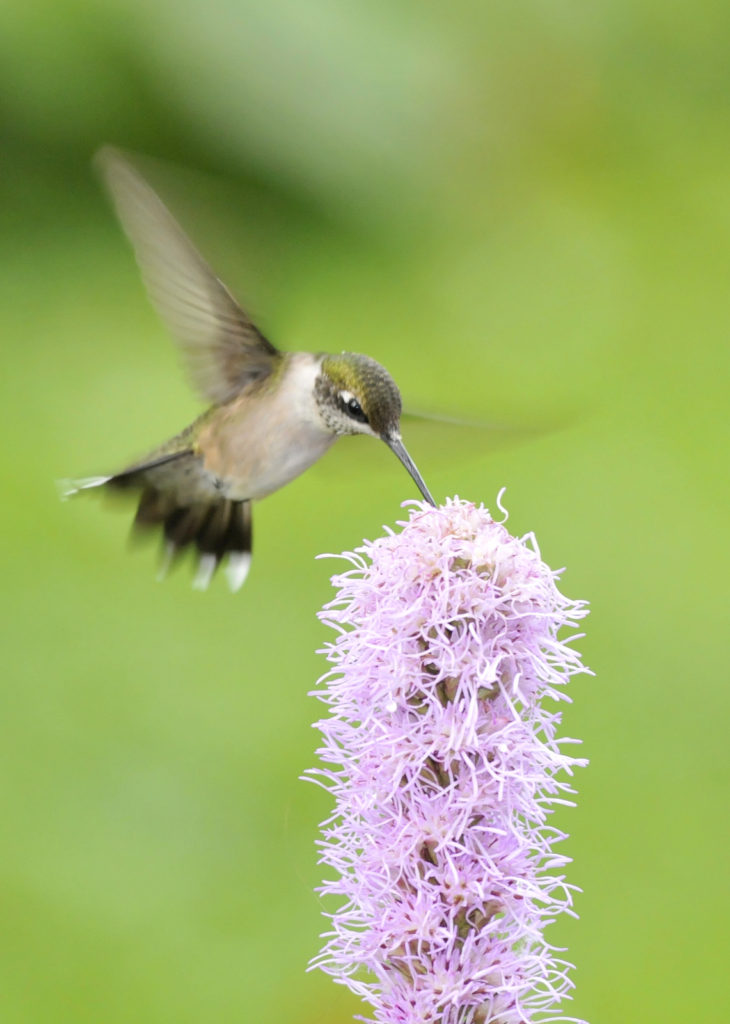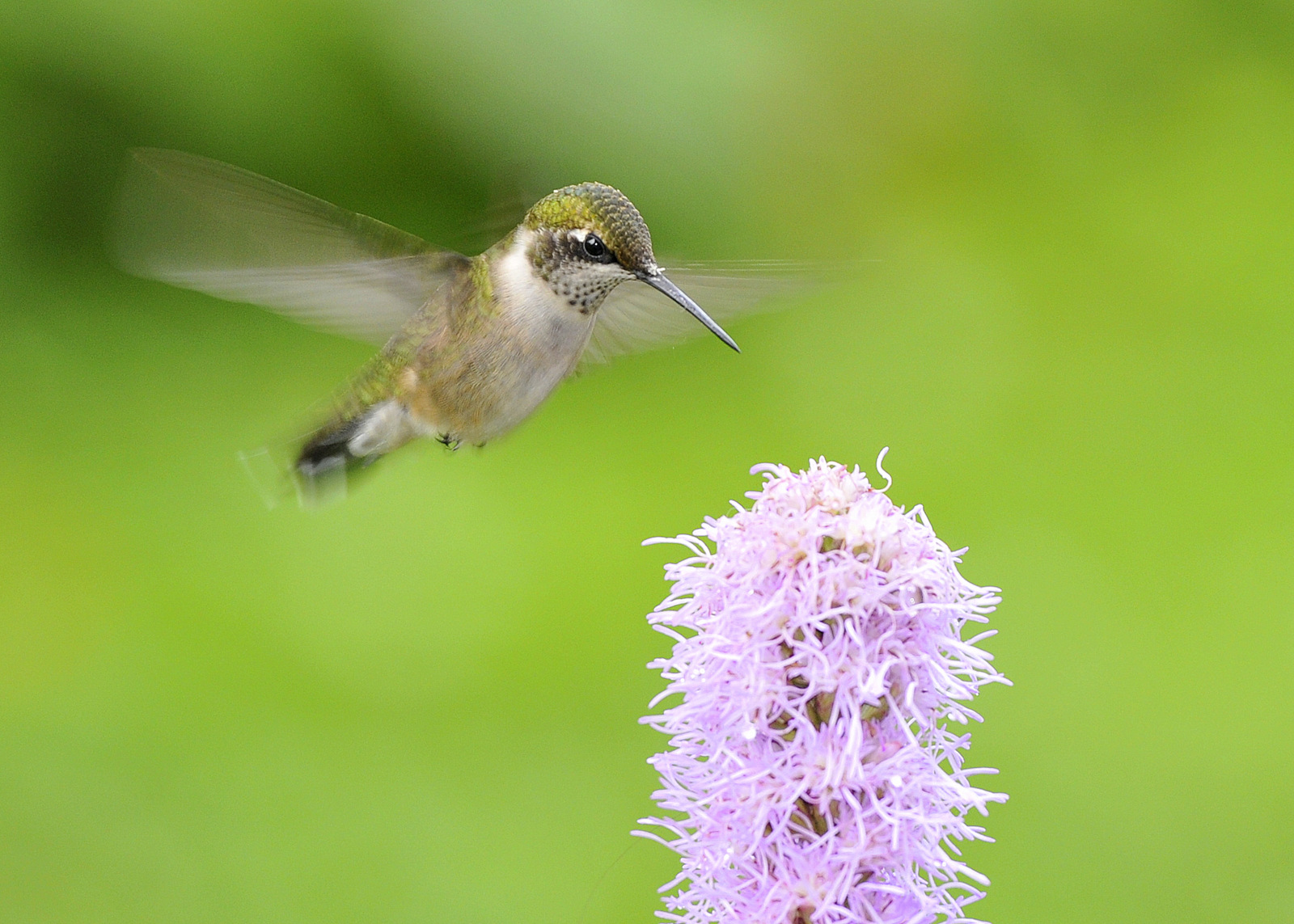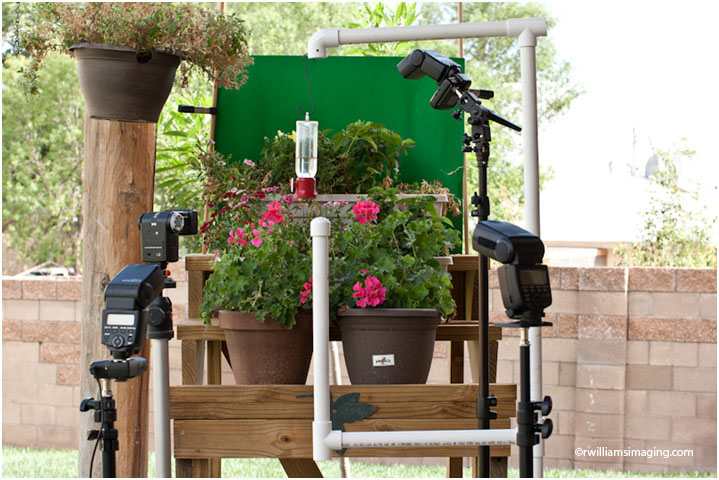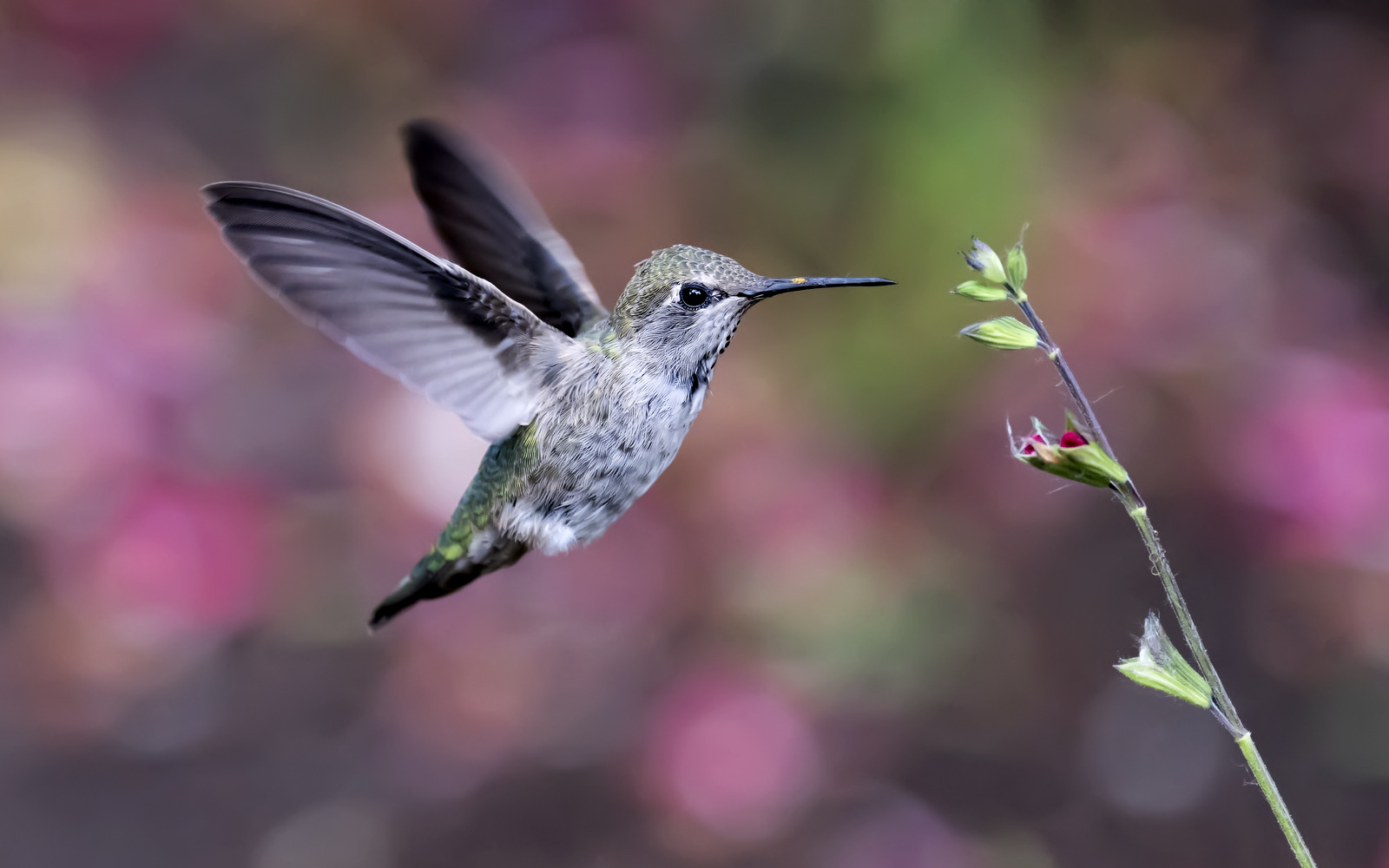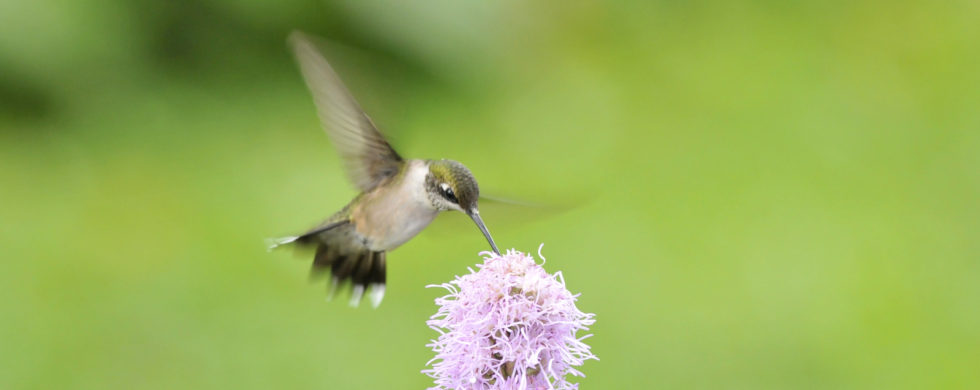
30
2021Wing It
Shot of the Month – November 2021
This month a dash of color to help counter the winter doldrums – here we see a lovely female Ruby-throated Hummingbird investigating the flowering Liatris Spicata (Blazing Star) plant.
You will notice that the wings off the hummingbird are blurred in my images. I actually like this look as it acurately reflects how we see hummingbirds with our eyes. And it adds to the “fairy” look – And what is more fairy-esque than these wee flying wonders?
Hummingbirds are tremendous flyers and can fly horizontally, backwards, vertically and can hover – the smaller the hummingbird the faster the wing beat to keep them aloft. The Ruby-throated humming bird shown here beats her wings about 50 times each second. A rufous humminbird’s wing beat is about 52-62 wingbeats per second. The giant hummingbird of the Andes (about the size of a Cardinal!!) has a wingbeat of just 12 beats/second. The tiny bee hummingbird of Cuba, the smallest bird on earth at just two inches in length, beats its wings 80 times per second. (Source)
Capturing an image of a hummingbird with the wings motionless is possible but requires a very fast shutter speed or the use of one or more flashes. Some photographers are quite adament about taking images of hummingbirds with the wings motionless and will go so far as to create mini “studios” to make it possible. In these setups one puts a feeder on a table or hangs it from a stand, sometimes amongst or behind flowers. From here you surround the area with 4 to 5 flashes set to expose the scene so quickly that the wing motion appears static. Sometimes a painted backdrop is added to ensure that the background color is just right. Quite a bit of tinkering may be needed to deterime the proper location of each flash to ensure that the scene is properly lit. You also need to spend some time to dial in the appropriate power output of each flash to get the right exposure. The feeder is essential to ensure that the hummingbird comes back to the exact same location for the specific lighting setup that you have created. Here is an example of one home setup:
In countries where hummingbirds are plentyful, say Costa Rica or Ecuador, you can actually book a photo tour where the guides will create elaborate hummingbird setups – all you have to do is show up, connect your camera to the flashes and snap away.
It’s all a bit much for me – I am not quite that motivated to get the “perfect” shot of a hummingbird and prefer to take my chances in the “wild.” In the images above I actually did use one flash but as you can see it didn’t do much to help stop the wing movement (I didn’t really know what I was doing).
Here we have a free range Anna’s Hummingbird that I shot with natural light in our garden:
But hey, who I am to judge? If you are passionate about hummingbird flash photography, go for it. If you want more information on how to set up such a setup, look here:
Hummingbird Flash Set-up Guide
And here is a video of a guy that walks you through how he puts together his setup.
And here is an example of a hummingbird photo tour to Ecuador.
There you go – the ins and outs of hummingbird photography. You can go hardcore studio lighting or you can just “wing” it, uh, so to speak.
Until next month…..m
Nikon 300S, Nikon 70-200mm f/2.8 (@ 200mm @ f/4), ISO 800 1/250 sec.

